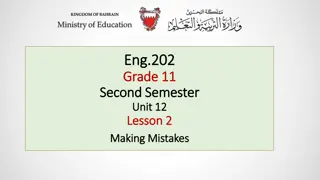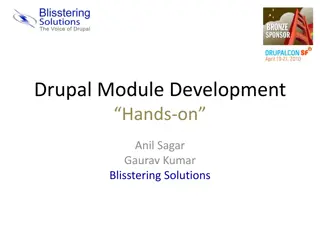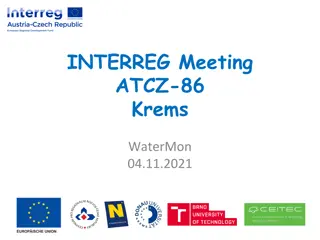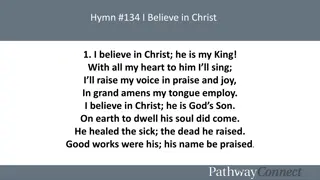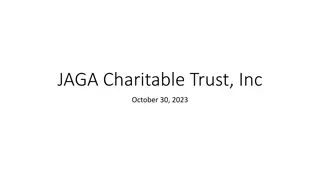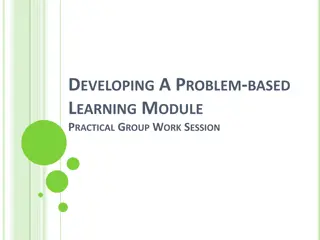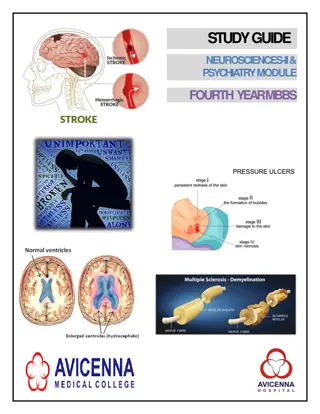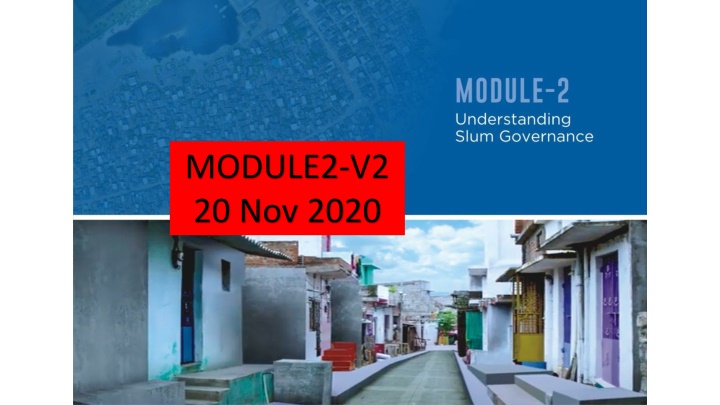
Local Governance and Citizen Empowerment through JAGA Mission
Explore the principles of local governance, citizen participation, and empowerment through JAGA Mission in Odisha. Learn about the roles of different government bodies and how citizens play a crucial role in shaping their communities.
Download Presentation

Please find below an Image/Link to download the presentation.
The content on the website is provided AS IS for your information and personal use only. It may not be sold, licensed, or shared on other websites without obtaining consent from the author. If you encounter any issues during the download, it is possible that the publisher has removed the file from their server.
You are allowed to download the files provided on this website for personal or commercial use, subject to the condition that they are used lawfully. All files are the property of their respective owners.
The content on the website is provided AS IS for your information and personal use only. It may not be sold, licensed, or shared on other websites without obtaining consent from the author.
E N D
Presentation Transcript
MODULE2-V2 20 Nov 2020
Jaga Mission Phase 2 26th November 2020
Learning Objectives 1.Who is the Government ? 2.Introduce concepts Mo Sarkar, ULB, Ward Office 3.Introduce concept of local governance 4.Introduce JAGA Mission and the 4thtier - SDA 5.Functions of ULBs 6.Functions of SDA 7.Roles of SDAs under JAGA Mission and beyond ( 2 slides) 8.Role of Ward Officers 9.Summing up 10.Role Play / Instructions to conduct a mock SDA meeting
Sarkar Kie? Who is Government? We, the people are the Government! There are three types of Government Kendra Sarkar (Central Government) Rajya Sarkar (State Government) Nagar Sarkar/Panchayat (Local Government) The main objective of Government is to bring social and economic development to the people.
Instructor Notes to explain role of ULB We all know about Central Government and State Government. Prime Minister heads Central Government and Chief Minister the state government. Gram Panchayats are responsible for governing villages. But how do we govern our cities? The Urban Local Body (ULB) What exactly does the ULB do? Who runs the ULB? Different Officers of ULB What is a Ward? What does a Ward Officer do?
What are the functions of ULB? Roads Drains Street Lights Water ULB Sanitation Parks
People Participation in Local Governance PANCHAYATS SDA or Ward Committee
People are the soul of a democracy. All the institutions exist for serving the people. All the staff are paid salary by the people. People own the Government institutions and People are the masters of Government. Mo Sarkar is an Empowerment Initiative to treat every citizen visiting a Government Institution with dignity and Treat every issue in a Professional and Ethical manner.
JAGA MISSION Government of Odisha createda unique modelfor participatorygovernance : SlumDwellers Associations(SDA) SDAs organized slumresidentsandempoweredthemtoplayanactivepartintheJagaMission. SDAs help represent issues of slum dwellers to the ULB, participate in the creation of Adarsh Colonies SDAs are a mechanism to politically empower citizens in the slum to lead a life of dignity as other people in the city 07
The 4th tier of Government in Odisha To ensure effective governance across the country, roles and responsibilities are divided into 3 levels. In Odisha, we NOW have the 4th Tier the SDA! KENDRA SARKAR THE CENTRAL GOVERNMENT NAGARA SARKAR THE LOCAL GOVERNMENT RAJYA SARKAR THE STATE GOVERNMENT SDA 03
SDAs represent citizens in the slum Country State City Slum Slum Vidhana Sabha Municipal Council Lok Sabha Development Association
Before SDA After SDA ULB ULB Ward Officer Ward Officer SDA slum slum
Functions of SDA Slum Dwellers Association Represents all households in the slum Acts as a bridge to ULB to manage day to day problems Actively participates in Jaga Mission SDA Has 10 members (5 women) Conducts monthly meetings. Passes resolutions Office Bearers President, Secretary, Treasurer SDAs already took part in USHA Survey, UWEI COVID Management
Project Implementation Find implementation partners Execute Monitor quality De-notification Work completed SDA passes resolution ULB de-notifies slum IGAP PNA Identify infra gaps Create project plan Participatory needs assessment SDA Group Discussion Jaga Mission : Slum to Adarsh Colony 6 v e r t i c a l s Piped Water Supply In house Electricity Access to Toilets Pucca Roads Pucca Storm Water Drains Street Lights
Role of SDA in Phase 2 of Jaga Mission Slum to Adarsh Colony PNA DE- IGAP IMPLEME NTATION NOTIFICA TION Participatory Needs Assessment Infrastructure Gap Analysis Call SDA Meeting Discuss if work is complete Propose Resolution to delist Understand gap analysis and provide feedback to ward officer Act as implementation partner Monitor works Raise issues if work is not satisfactory Assist Ward officer Hold Group Discussion Ensure assessment is accurate
EXAMPLE OF A ULB STRUCTURE OF ROURKELA MUNICIPAL CORPORATION Shri Nikhil Pavan Kalyan, IAS Administrator, RMC Shri Dibyajyoti Parida, IAS Municipal Commissioner, RMC Accounts Officer Executive Engineer ADMO(PH) Project Officer Health Officer Head Asst. (Accounts) Asst. Executive Engineer Community Organiser Sanitary Inspector Asst. Engineer Accountant CMMU MANAGER Junior Engineer Dealing Assistant Supervisor
Instructor Notes Discuss Slums There are 2919 slums in Odisha. Jaga Mission will make sure each one of them is converted to Adarsh Colony Can this be done without active involvement of people in the slums? Can the voice of slums be heard in the ULB without an active SDA? Is SDA any less important than Lok Sabha or Vidhana Sabha? Define the relationship between a ward and a slum Ward Officer as nodal officer for this entire Jaga Mission SDAs must develop cordial working relationship with their ward officer .
ULB: Wards, RWAs, Slums CO CMMU EO Engineer Ward Officer Ward Office Citizens ULB Citizens Community Center RWAs SDA Localities Parichay Wards Slum1 Citizens Slums Slum2 SDA
Role of Ward Officer Responsible for Responsible for all ULB functions all ULB functions in a ward in a ward Ward Officer SDA EO Slum 1 Processes resolutions passed by SDA Is the Nodal Officer for Jaga Mission Ward 1 Slum 2 ULB Ward Ward Officer Officer Ward 2 Slum 3 Slum 4 Helps build Helps build key skills key skills within SDAs within SDAs for Jaga for Jaga Mission and Mission and beyond beyond Ward 3 Ward Officer Each ward Each ward may have may have multiple slums multiple slums Slum 5 SDA Acts as a bridge between ULB between ULB and SDA and SDA
SDA Community Organizational Skills SDA Community Organizational Skills During the meeting Convening meetings Taking attendance Running agenda Status check on pending items Discussion and decisions Recording resolutions Choosing time and venue Ensuring key people are present Setting the agenda Leadership Skills After the meeting Identifying talent Resolving conflict Building consensus Delegation Collective ownership Sending resolutions to ULB Follow up with ward officer Sharing data and decisions Maintain records (SDA Register)
Work Identify active people. Make them feel part of the process. Maintain Records of meetings, attendance complaints, resolutions Hold regular meetings; ensure good participation closely with Ward Officer Visit ULB office 4 things SDAs must do Jaga Mission Phase 2. From Slum to Adarsh Colony
INSTRUCTIONS TO TRAINERS : SDA Meeting Role Play Learning by doing : Pass a resolution in SDA! Learning by doing : Pass a resolution in SDA! When you deliver this SDA Capacity Building Training in a slum, please take 10-15 minutes to do this role play to help them understand how meetings are held and resolutions are passed. Purpose : To demonstrate how to pass a resolution in SDA meeting for delisting (see SOP Annexure 4A) This meeting happens after PNA, IGAP and Implementation Phase is done. (Step F in the SOP) 1. 2. 3. Invite SDA members and get them to sit around for an SDA meeting All SDA members sign in the register to mark attendance. Secretary calls the SDA meeting to order. Describes the agenda Today we are meeting to discuss a proposal to delist our slum President speaks about work done to upgrade the infrastructure in the 6 verticals (Roads, Drains, Street Light, Water, Access to toilets, In House Electricity) asks the members if they think the work is completed to their satisfaction. Encourages everyone to speak up. Addresses any concerns. Secretary records key points. President proposes a resolution to delist the slum as per the SOP if work has been completed Secretary takes a vote of members of SDA. If majority agrees, President declares the resolution to be passed. Congratulates all members as they successfully completed the process of slum upgradation. Secretary Fills up the form. Gets signatures from all present. Makes a copy for records. Sends it to the ULB. Secretary declares end of meeting. 4. 5. 6. 7. 8.
SDA RESOLUTION FOR DELISTING OF SLUM (1/2) Annexure 4(A)
SDA RESOLUTION FOR DELISTING OF SLUM (2/2) Annexure 4(A)
END MODULE2-V2 19 Nov 2020
APPENDIX DO NOT USE
Why is it important to empower SDAs? Information is power SDAs must know how government works, who does what Citizens of the slum play a key role in converting slums to Adarsh Colony To ensure their voice is heard in every major step of the process To create a formal sustainable structure for citizen participation in local governance When SDAs take ownership of slums quality of life improves for everyone To improve quality of infrastructure work by continuous monitoring
Become Implementation Partner for infra works Participate in group discussion (PNA) Monitor works, raise issues to ward officer Work closely with Nodal Officer (Ward Officer) Pass resolutions as and when needed (for example, de-notification) Functions of SDA during Jaga Mission Act as a bridge between slum dwellers and ULB Manage community assets like Parichey
Review Learning Objectives for Module 2 Slum Governance 1. Review Governance model at a high level 2. Review functions of ULB (third tier) 3. Understand what 4th tier of governance is 4. Learn about SDAs 1. What is an SDA? 2. What are the functions of an SDA? 5. Why is it important to empower the SDAs? 6. What capabilities should SDA have to successfully participate in Jaga Mission Phase 2? 7. Learning Exercise : Passing a resolution in SDA for delisting
The 6 verticals of Jaga Mission Phase 2 The 6 verticals of Jaga Mission Phase 2 Water In house electricity Access to Toilets Pucca Roads Pucca Drains Street Lights
Why are SDAs critical? To allow for equal representation of the voices that have been so far denied due to their status as illegal occupants or encroachers' To allow them a voice in addressing civic and governance issues that directly affect them To create space for their inclusion in governance processes, eventually taking them into the mainstream urban governance fold To enhance their quality of life by improving their living conditions through participatory infrastructural development of their settlements.



